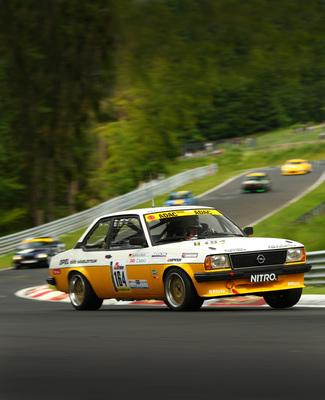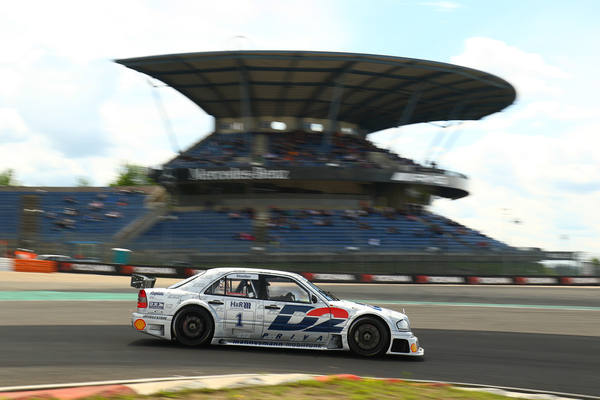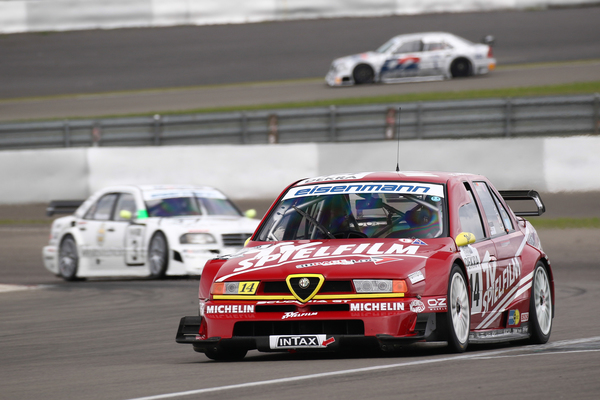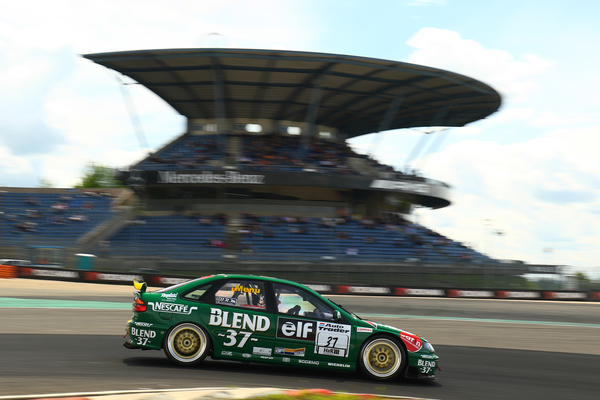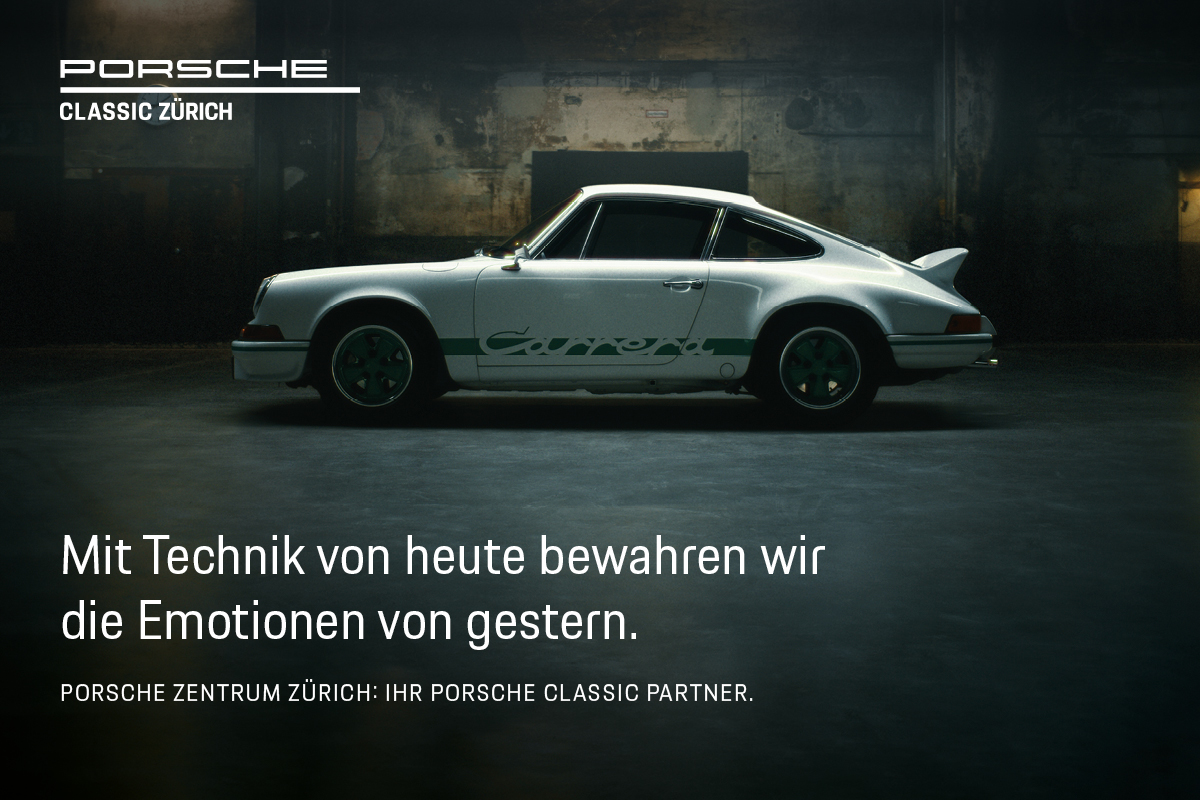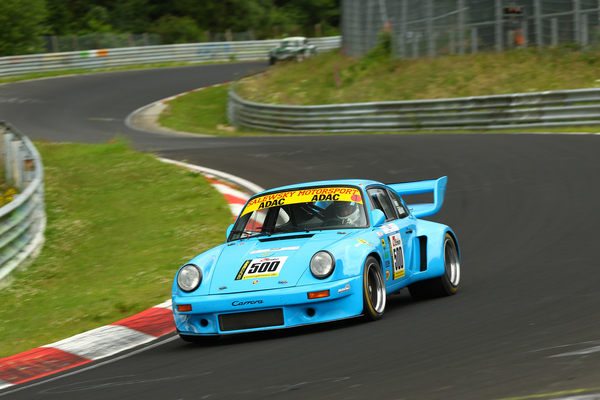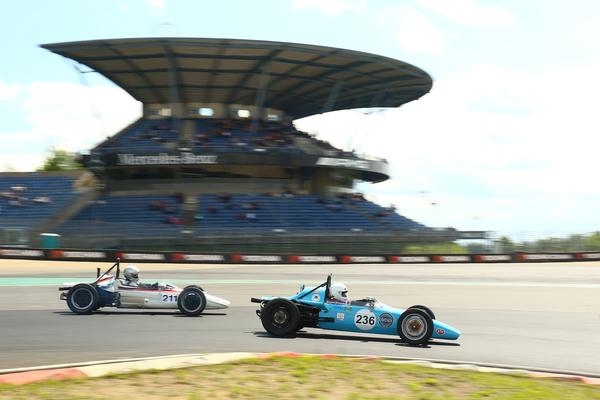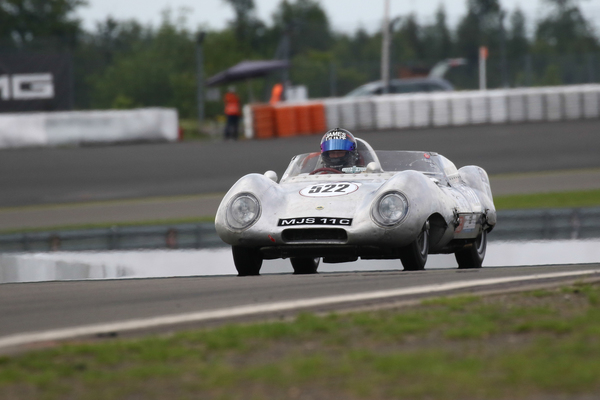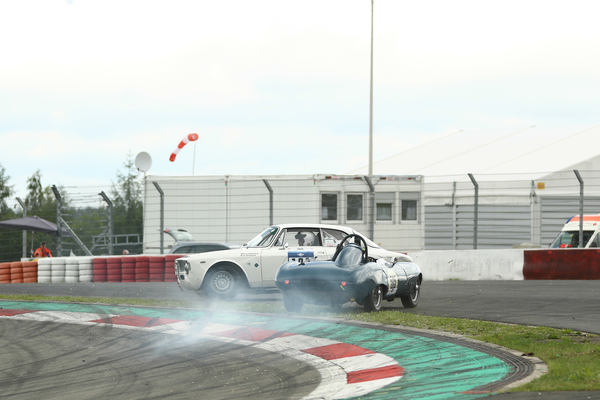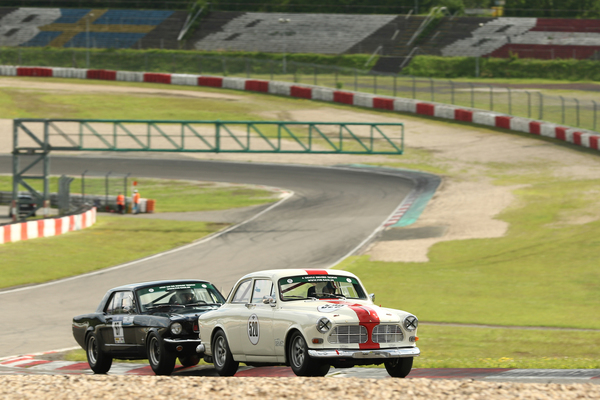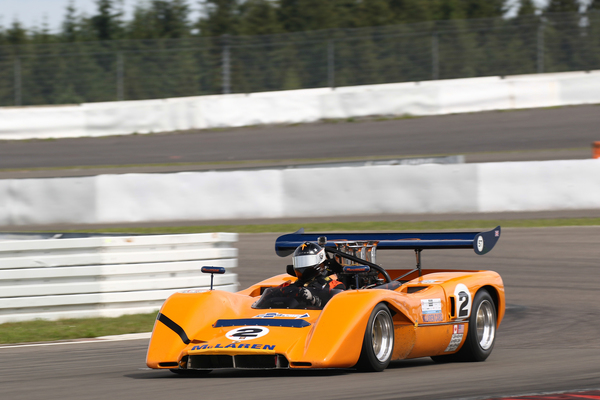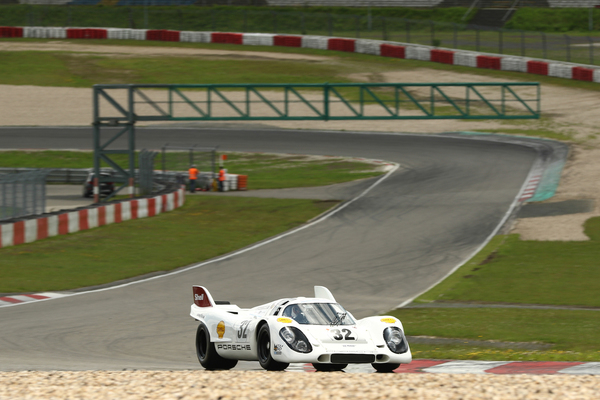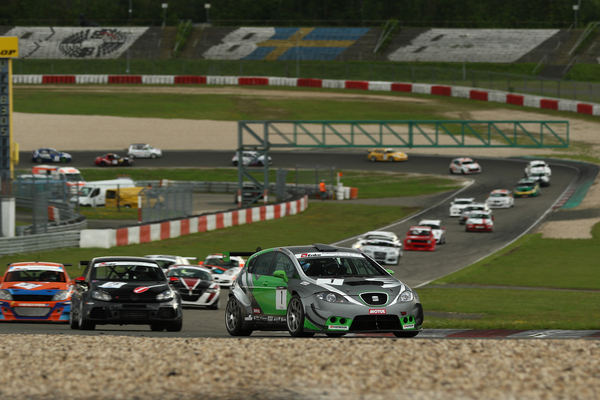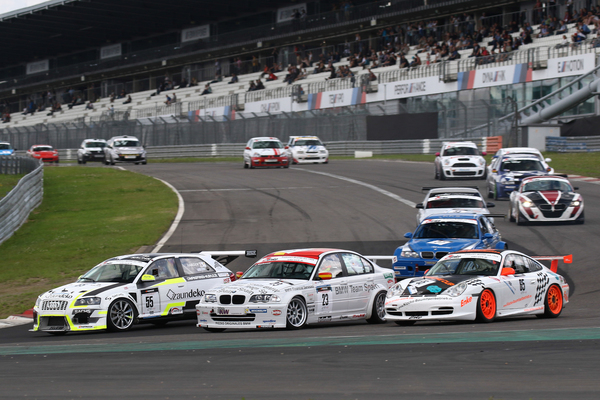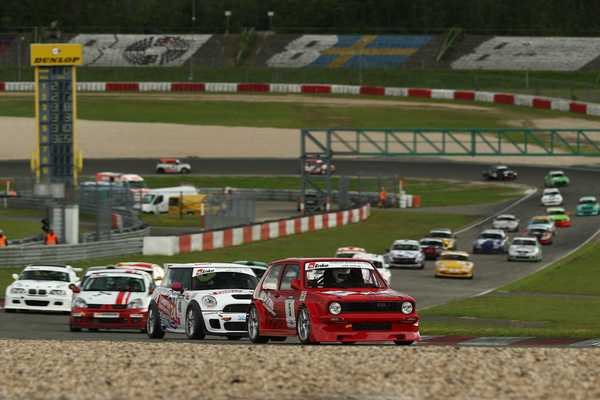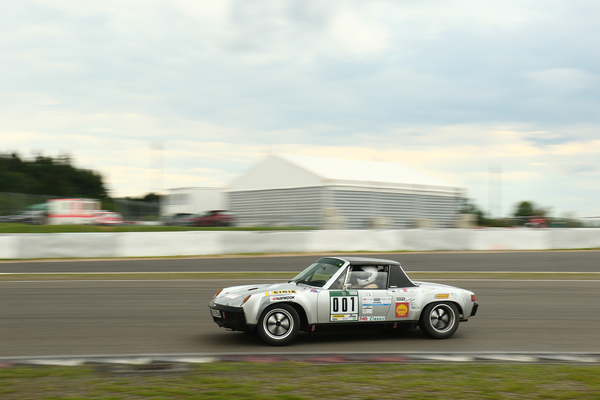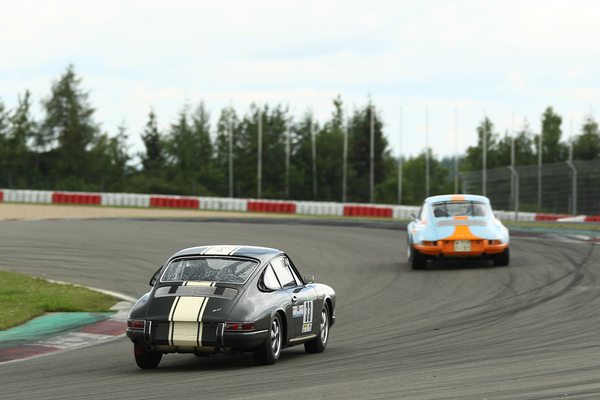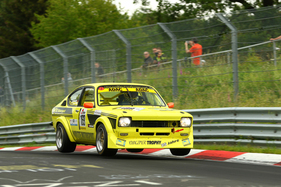The Nürburgring Classic took place from June 15 to 17, 2018 in unusually good weather conditions for the Nürburgring, i.e. dry weather. An extensive range of vehicles and a large number of races and regularity tests provided plenty of variety and beautiful racing nostalgia on the Nordschleife and the Grand Prix circuit.
Touring Car Classics not on the Nordschleife
The Touring Car Classics race should have been a very special treat, as the cars were supposed to race on the Nordschleife again, just like 20 years ago. That would have been a small sensation, but only "if". Ultimately, there was a lack of the necessary marshals, as the race participants did not want to drive practice and race on the same day in order to have enough time for maintenance and repairs. To the regret of many Ring visitors, the race was held on the Grand Prix circuit after all.

To finish first, you need to finish first
The old racing wisdom that you have to finish first to win was once again demonstrated to two favorites in the touring car race, which is reminiscent of the good times of the DTM. Both Stefan Rupp (Alfa Romeo 155 V6 TI ITC) and Jörg Hatscher (AMG C-Class) did not finish without problems. Despite faster lap times than the leading Thorsten Stadler, it was not enough for them to triumph, it was not even enough for classification, because 11 and 15 laps respectively were not enough.

The Stadler with the AMG C-Class had the better end of the stick and won with an average speed of 134.49 km/h.
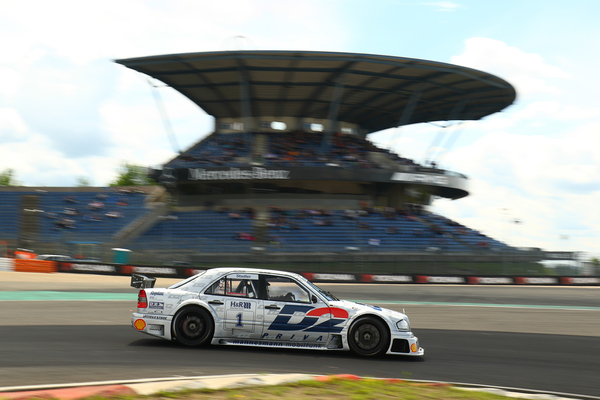
Second place went to Alexander Schmidt in a more convincingly fast Renault Laguna from the BTCC, followed by Stephan Piepenbrink in a BMW M3 E30 DTM.

Once again, the fire-breathing Ford Sierra RS 500 of Gianfranco Brancatelli, which unfortunately did not finish, and the Audi V8 DTM with Klaus Peter at the wheel provided a nice splash of color.
Clear decisions in the endurance races
With the move of the Touring Car Classics to the Grand Prix circuit, the Eifel race on the Nordschleife became the main attraction. The cars from the FHR and the Youngtimer Trophy took part, both fields were on the road for three hours on the entire track, with the fastest covering over 400 km.

The results could not have been clearer. In the older cars, Andrew Wolfe and Jason Wright won in the Ford GT40 with an average speed of 142.06 km/h. They were followed by Heinz Schmersal and Mike Stursberg in a Ford Escort RS1600 with a much lower engine power, followed by Pedro Sanchez and Luco Sanchez in a Porsche 911 ST.

In the younger race cars, Daniel Schrey in his usual fast Porsche 935 K1 put a good lap distance between himself and his fastest pursuers, Edgar and Nick Salewsky in a Porsche 911 RSR. Oliver Boyke came third in another 911 RSR, followed by Jürgen and Peter Schuman, who were joined by Olaf Manthey in a BWM 635 CSI. Incidentally, Salewsky drove the fastest lap of the race in 9:48.637, while Schrey averaged 150.85 km/h per hour.
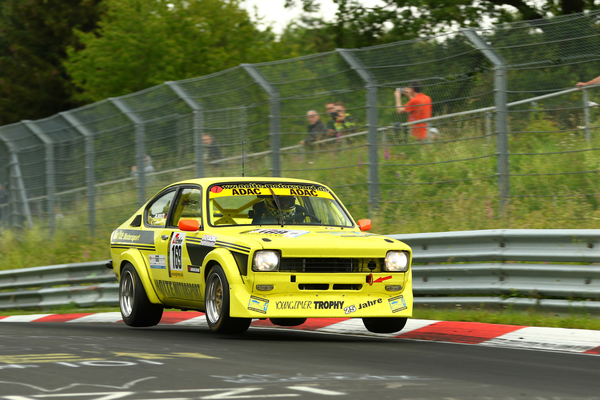
Premieres for the regular
For the first time, participants in regularity races were also allowed to drive on the entire circuit, i.e. the Grand Prix circuit together with the Nordschleife. This premiere was well received by the participants and the spectators. Above all, the regularity fields were peppered with many interesting cars that you don't see every day.

If you looked closely, you could see a TVR Vixen, a VW Bonito, an Opel Ascona 400, a Mercury Cougar or a Borgward Le Mans Coupé. You don't see cars like these every day at the Nürburgring.

Well-assorted Formula Vee field
The field of Formula Vee cars was really extensive. Around 50 monoposti powered by Volkswagen engines tried to drive evenly, including very old cars from the early days to modern racing cars from the current millennium.

Air alternated with water cooling, and this field was impressive in terms of shape and color anyway.
Gentlemen drivers with a colorful field
The Gentle Drivers, who contested two races on the Grand Prix circuit, were also very diverse. From limousines (e.g. Volvo P120) and sports cars (e.g. Porsche 356 A) to thoroughbred racing cars (e.g. Lola Mk 1), there was everything to see in this series.

Markus Jörg was victorious in the first race in a Lotus Eleven, while the second race was won by Wolfgang Henseler in a Crossle C9S, albeit only by a narrow margin of 4.494 seconds ahead of Jörg. The fact that the race was not entirely without contact with the enemy only slightly called the series title "Gentle Drivers" into question.

Thin CanAm field
The brute CanAm racing cars, which have been combined with the Supersports for several years now, have always been very popular. Unfortunately, the starting fields are getting smaller and smaller, so that far fewer than a dozen cars took to the track for the first race.

Felix Haas, who was one of the frequent starters this weekend, put a gap of almost 15 seconds on second-placed Georg Hallau and safely drove home the victory in the Lola T294. This is how the classification looked again in the second race.

A Porsche 917 provided a splash of color in the field, but unfortunately crashed early on.
Cup cars from the past and almost today
The "CTT", the Cup and Touring Car Trophy, creates an interesting playing field for a wide variety of racing cars from one-make cups and special series. From the Seat Leon from the World Touring Car Championship, to the Renault Clio RS, to the Porsche 944 Turbo Cup or VW Lupo Cup, everything that is still too young or too special for other historic racing series can be found here. It is clear that this results in a large number of sub-classes, but this does not detract from the racing action at all. In any case, these cars offered not only one of the densest, but also one of the most colorful racing fields of the weekend.

The winner of the first race was Manfred Lewe in a Sean Leon WTCC (starting number 1), followed by Jochen Thissen in an Opel Astra and Kaufmann-Borowski in a BMW Z4M Coupé.
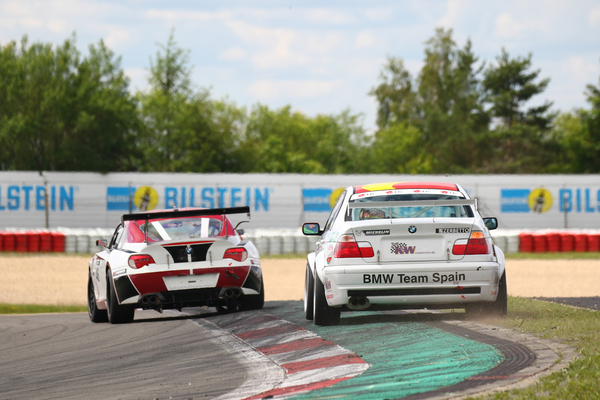
The second race was won by Markus Barczak in a VW Golf 6R, Thissen in an Astra was again second and Michael Haager in an Audi A3 Turbo came third. Interestingly, the Porsche 996 GT3 Cup cars were unable to intervene in the battle for the top three places in either the first or second race.
Pre-war festival around the Ring
The participants in the pre-war races completed a varied program. The sixth Le Mans race on June 16 and 17, 1928 was commemorated, not least 60 years in the past.

A large number of Bugatti, Maserati, Bentley, Riley and MG cars ran riot on the North Loop, but also on the Grand Prix circuit, where the highlight of the "Elephant Race" with Le Mans start provided a welcome public attraction. As with many other racing classes, the Olympic idea of being there is everything.
There are over 240 pictures of the individual racing series in the separate picture gallery!

